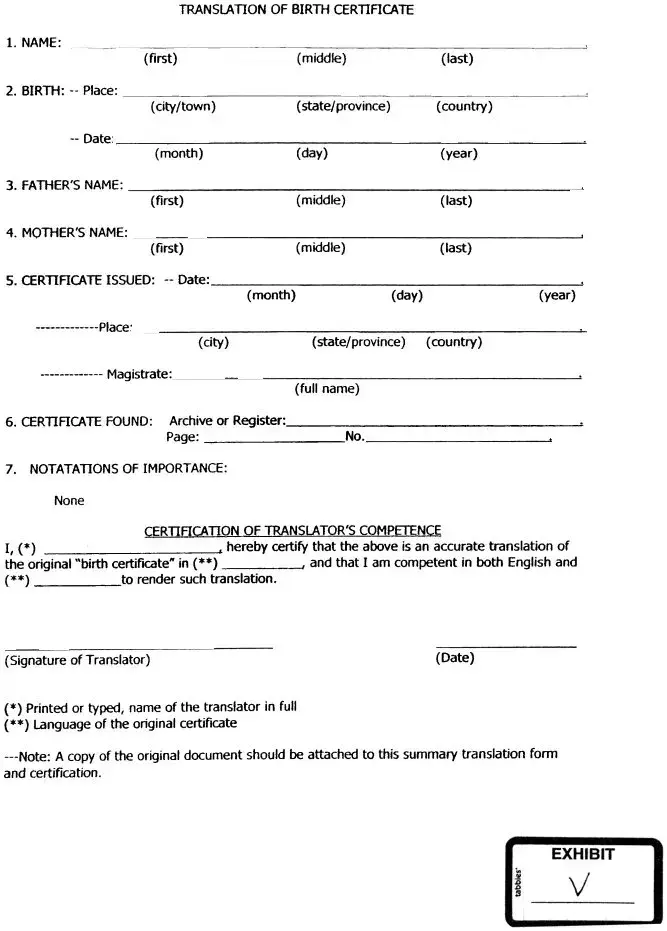Blank Birth Certificate PDF Template
A Birth Certificate form serves as an official document providing details of an individual's birth, encompassing information such as name, date and place of birth, and parental details. It is a crucial document for legal identification, facilitating the attainment of rights and services. For those needing to validate their birth details officially in a language other than that of the original document, a certified translation of the birth certificate is required, as outlined in the form above.
To securely submit or request the official translation of your Birth Certificate, please click the button below.
Make This Document Now

